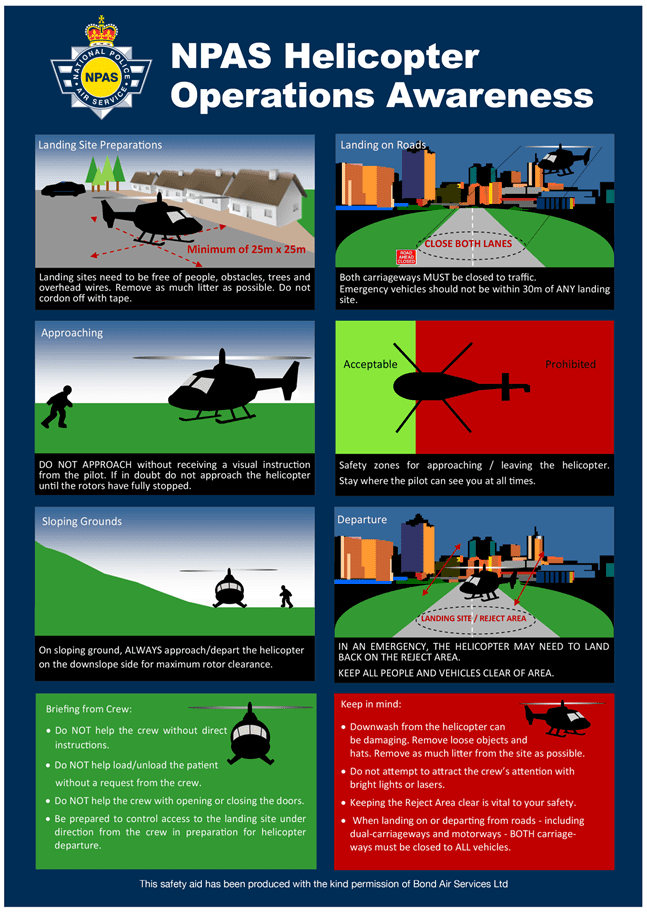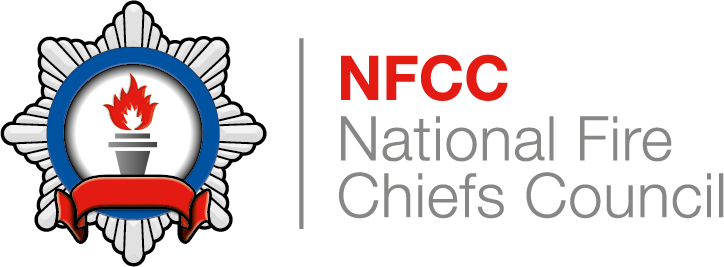Personnel should approach from the front of the helicopter, in full view of the pilot. The exception to this is for military Chinook helicopters, which should be approached from the rear in full view of the aircrew loadmaster.
Personnel should avoid areas near to the tail rotor and the exhaust outlets. Equipment should be carried at a low level, and not in an elevated position to avoid the main rotors.
If the helicopter has landed on sloping ground, personnel should approach or leave the helicopter on the downslope side, to maximise rotor clearance.
Further information is shown in the National Police Air Service (NPAS) Helicopter Operations Awareness diagrams below. However, fire and rescue services should consider seeking training from the helicopter service providers who are commonly used in their area.

